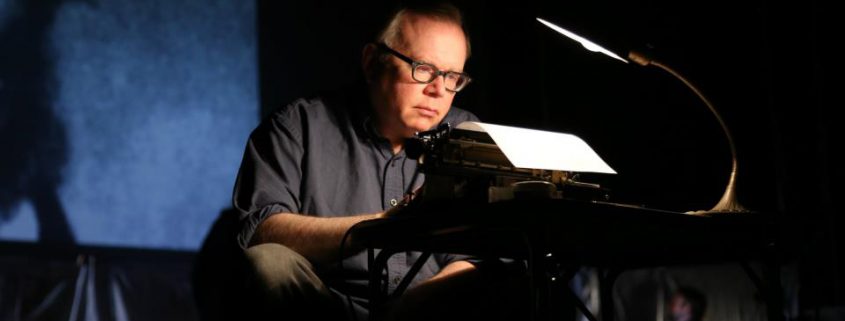One More (perhaps Superfluous) Webpage on 4´33˝
An old friend shared on Facebook a link showing four performances of Cage’s 4´33˝ (and one philosophy lecture about it) the other day, remarking that he couldn’t understand why it was that this piece was still being talked about. He thought that its point could have been made in less time and is astonished that it remains noteworthy.
Unsurprisingly, one of his friends soon echoed the same sentiments with a lot more invective for Cage, which prompted me to write the following. It’s amazing to me how riled up this little piece gets people. Anyway, it got me thinking that 4´33˝ is one of the most celebrated pieces of Cage, maybe the most celebrated one; it’s also overly celebrated and grossly misunderstood. I posted this thought on Facebook.
Why do I say the piece is overly celebrated? Because even to its advocates, it has eclipsed almost every piece he’s written since. And Cage made many pieces after 1952. Add those pieces to all the ones that he wrote before 1952 and you have an output of roughly 300 works. And there are more if you take into account certain pieces like the various parts from the Concert for Piano and Orchestra and the Music for _____ series, which can be played by themselves or in combination with any of the others, or pieces like Song Books and Variations III, which can be realized in countless ways. Poorly informed critics who like to argue that Cage was more of a philosopher than a composer point without exception to 4´33˝; very few have listened carefully to any other works. That situation has begun to change as performers and have programmed more of his music and record labels have released new and usually better recordings.
Shortly after I made my brief Facebook remark, Emil Israel Chudnovsky, the aforementioned friend, took the bait:
We all understand the concept: the sounds of silence, the impossibility of absolute silence, the meditative space of collective silence/non-silence. Yeah, yeah, yeah. Yada yada yada.
Nice concept, might make for a legitimate essay or the occasional illustrative performance. Thus far, legitimate albeit a little too patently self-impressed; full of the pride of the pothead who’s come up with an intriguing question.
But then the son-of-a-mother has the cojones to publish and sell the “sheet music”. And then I know him to be a self-aware fraud. And know him to have the utmost contempt for the public as for the flock of trusting, neurotic sheep they prove themselves to be as they BUY said sheet music.
I offered to continue the discussion over e-mail because I know from experience that Facebook isn’t really a very productive medium for discussion. The following transcribes that exchange. (Thanks to Emil for allowing me to quote him.)
Me:
The significance of 4’33” has to do with a fundamental tenet of Buddhism, that everything in the world is important and valid, but only if one remains unattached to it. The question of this detachment is hard to describe—it doesn’t mean to be emotionally unmoved, but rather not to hold on to any feeling that the phenomena engender. It’s something really far past the notion of “any sound we make is music.” Cage mentioned in a 1980s interview that every day he turns his attention to it: a key to his devotion to the ideas of it.
As to the copyrighting of it, that was a condition that C.F. Peters made when it entered into its contractual relationship with Cage in 1960. It’s too easy to make fun of the piece, I think—to oversimplify it, but also to overemphasize it, to hypostatize it. But one can choose to ignore that aspect of the piece. That’s what I would encourage people to do.
Emil:
So how exactly is
a) calling it a piece of music
b) making its “performance” a public event
c) allowing it to become a synecdoche for all things musical and avant-garde
Buddhist or unattached? What exactly does 4’33” encourage us to disattach from? I do understand the idea that attachment brings suffering, but it seems to me George Lucas’ Jedi knights did more to examine the idea, even with inane dialogue and epic special effects, than any number of Cage performances or debates ever did.
Me:
Calling it a piece of music was probably too simplistic on Cage’s part. But as he was a composer, and as it involved sounds, I’m not sure what else he would have called it.
Cage’s aim was for people to change their Mind in accordance with the tenets of Zen Buddhism. A performance is, I think you’ll agree, an extraordinarily potent way of making that point.
I am not sure 4’33” ever became a synecdoche for all things musical and avant-garde. To the extent that it did sort of speaks to my remark about it being grossly overvalued and misunderstood.
4’33” invites unattachment from all phenomena. I’m not sure I can make the concept of unattachment more clear. But it doesn’t have to do with forswearing all stimulus, but rather not becoming too overwrought by experiencing the stimulus.
George Lucas helped a lot too, but he made it more mystical than it needs to be.
Emil:
As for unattachment from all phenomena being in any way expressed by 4’33”, there is where I still disagree with you but need to formulate my thoughts a bit better to be coherent about why. As for the CONCEPT of unattachment, and how it means letting the world flow through and past you without necessarily altering you, I completely agree and hope to understand it fully one day, at the visceral level. Right now it’s just an intellectual construct. But 4’33” has certainly never done anything about moving the concept into the viscera. Indeed, the very fact that you had to point out the intention underlying the “piece” seems to argue for its being an ineffectual exercise in the alteration of Mind.
Cage was explicit about the connection, though? Between 4’33” specifically and Zen?
Oh, as for Peters, I’d still argue that true consistency would have made for a conversation of a separate contract, if need be. The act of publishing the work seems to argue against unattachment and to merely invite the kind of indictments that I – and millions of others – have leveled against Cage for many decades.
Me:
Buddhism is, ironically, an intellectual construct. So is every religion. (I can’t think of one thing that a person absorbs innately; can you?) One needs a little literature to introduce any spiritual idea, I think. But one soon realizes that words lose their effectiveness and meaning quickly.
I don’t think phenomena can pass through you without altering you. What I argue is that it doesn’t alter you permanently. 🙂
Cage famously avoided talking about these things because he was so terrified of imposing his ideas on others. But the interview with William Duckworth contains the ideas that I’ve used in my e-mails to you. (Talking Music; also published in the John Cage at 75 festschrift published by Bucknell Univ. Press.)
As for indicting Cage for 4’33”, I would say it’s sad that people do this when there are some 300-odd other pieces of his that are worthy of attention and don’t carry the same kind of baggage.
So there you have it. I’m sure I’ll have more to say about this.

